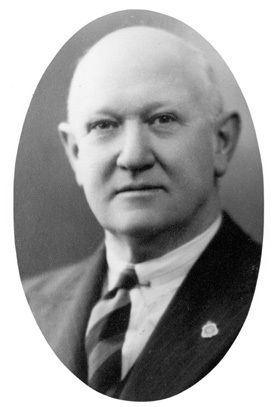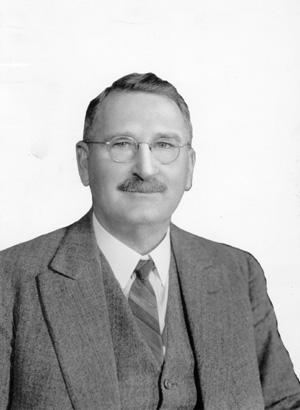|
Aubrey Coverley
Aubrey Augustus Michael Coverley (29 September 1895 – 19 March 1953) was an Australian politician who was a Labor Party member of the Legislative Assembly of Western Australia from 1924 until his death, representing the seat of Kimberley. He served as a minister in the governments of John Willcock and Frank Wise. Early life Coverley was born in Bridgetown, a small town in Western Australia's South West region. He enlisted in the Australian Army in 1915, serving with the 10th Light Horse in the Middle Eastern theatre. He was wounded in April 1917 and discharged from service later in the year. Coverley initially returned to Bridgetown after being repatriated, employed as a post office clerk but in 1919 transferred to Broome, in the North West. He moved to Wyndham the following year, working at the town meatworks. [...More Info...] [...Related Items...] OR: [Wikipedia] [Google] [Baidu] |
The Honourable
''The Honourable'' (British English) or ''The Honorable'' (American English; see spelling differences) (abbreviation: ''Hon.'', ''Hon'ble'', or variations) is an honorific style that is used as a prefix before the names or titles of certain people, usually with official governmental or diplomatic positions. Use by governments International diplomacy In international diplomatic relations, representatives of foreign states are often styled as ''The Honourable''. Deputy chiefs of mission, , consuls-general and consuls are always given the style. All heads of consular posts, whether they are honorary or career postholders, are accorded the style according to the State Department of the United States. However, the style ''Excellency'' instead of ''The Honourable'' is used for ambassadors and high commissioners. Africa The Congo In the Democratic Republic of the Congo, the prefix 'Honourable' or 'Hon.' is used for members of both chambers of the Parliament of the Democratic Repu ... [...More Info...] [...Related Items...] OR: [Wikipedia] [Google] [Baidu] |
Wyndham, Western Australia
Wyndham is the northernmost town in the Kimberley region of Western Australia, on the Great Northern Highway, northeast of Perth. It was established in 1886 to service a new goldfield at Halls Creek, and it is now a port and service centre for the east Kimberley with a population of 941 as of the 2021 census. Aboriginal and Torres Strait Islander people make up 54% of the population. Wyndham comprises two areas - the original town site at Wyndham Port situated on Cambridge Gulf, and by road to the south, the Three Mile area with the residential and shopping area for the port, also founded in 1886. Wyndham is part of the Shire of Wyndham-East Kimberley. History Wyndham is within traditional Doolboong country. The first European to visit the area was Phillip Parker King in 1819. He was instructed to find a river 'likely to lead to an interior navigation into the great continent'. He sailed into Cambridge Gulf, which he named after the Duke of Cambridge, and then sailed up a ... [...More Info...] [...Related Items...] OR: [Wikipedia] [Google] [Baidu] |
The West Australian
''The West Australian'' is the only locally edited daily newspaper published in Perth, Western Australia. It is owned by Seven West Media (SWM), as is the state's other major newspaper, ''The Sunday Times''. It is the second-oldest continuously produced newspaper in Australia, having been published since 1833. It tends to have conservative leanings, and has mostly supported the Liberal–National Party Coalition. It has Australia's largest share of market penetration (84% of WA) of any newspaper in the country. Content ''The West Australian'' publishes international, national and local news. , newsgathering was integrated with the TV news and current-affairs operations of ''Seven News'', Perth, which moved its news staff to the paper's Osborne Park premises. SWM also publish two websites from Osborne Park including thewest.com.au and PerthNow. The daily newspaper includes lift-outs including Play Magazine, The Guide, West Weekend, and Body and Soul. Thewest.com.au is the on ... [...More Info...] [...Related Items...] OR: [Wikipedia] [Google] [Baidu] |
1953 Western Australian State Election
Elections were held in the state of Western Australia on 14 February 1953 to elect all 50 members to the Legislative Assembly. The two-term Liberal- Country Party coalition government, led by Premier Sir Ross McLarty, was defeated by the Labor Party, led by Opposition Leader Albert Hawke. The election was notable in that 22 of the 50 seats were not contested at the election. Only two other elections—those held in 1890 and 1894—had a greater percentage or number of uncontested seats. Key dates Results : 319,941 electors were enrolled to vote at the election, but 22 seats (44% of the total) were uncontested—12 Labor seats (six more than 1950) representing 65,993 enrolled voters, 3 Liberal seats (one more than 1950) representing 14,297 enrolled voters, and 7 Country seats (three more than 1950) representing 34,007 enrolled voters. See also * Members of the Western Australian Legislative Assembly, 1950–1953 * Members of the Western Australian Legislative As ... [...More Info...] [...Related Items...] OR: [Wikipedia] [Google] [Baidu] |
1947 Western Australian State Election
Elections were held in the state of Western Australia on 15 March 1947 to elect all 50 members to the Legislative Assembly. The result was a hung parliament—the four-term Labor government, led by Premier Frank Wise, was defeated with a swing of approximately 7%. The Liberal-Country Coalition won exactly half of the seats, one short of a majority, needed the support of the Independent members Harry Shearn and William Read to govern. The election was the Liberal Party's first major showing since its formation in 1944-1945 out of the former Nationalist Party. Coincidental with this, in 1944, was the significant change in the fortunes of the Country Party when the Primary Producers' Association, of which the Party had been the political wing, passed a motion during negotiations with the Wheatgrowers' Union deleting the rule which authorised the Party's existence and its use of PPA branches and funds for party purposes. A new organisation, was hastily set up by the Opposition Lead ... [...More Info...] [...Related Items...] OR: [Wikipedia] [Google] [Baidu] |
1943 Western Australian State Election
Elections were held in the state of Western Australia on 20 November 1943 to elect all 50 members to the Legislative Assembly. The Labor Party, led by Premier John Willcock, won a fourth term in office against the Country and Nationalist parties, led by Opposition Leader Arthur Watts and Robert Ross McDonald respectively. The election took place in the midst of World War II, and as such, turnout was considerably down on the previous election. The election was delayed from its intended date of February 1942 by the ''Legislative Assembly Duration and General Election Postponement Acts'' (No 51 of 1941, assented 16 January 1942, and No 18 of 1942, assented 9 December 1942) due to the war. In the previous term, two changes of membership occurred at by-elections. George Lambert, the Labor member for Yilgarn-Coolgardie, died on 30 June 1941 and was replaced by former Labor branch secretary Lionel Kelly, running under the "Independent Country" banner. He ultimately joined the Labor ... [...More Info...] [...Related Items...] OR: [Wikipedia] [Google] [Baidu] |
Minister For Forestry (Western Australia)
The Minister for Forestry is a position in the Cabinet of Western Australia. The minister is responsible for the Forest Products Commission, an agency of the government of Western Australia, and may hold other portfolios in addition to forestry. The current Minister for Forestry is Dave Kelly of the Labor Party, who holds the position as a member of the McGowan Labor Government. The responsibilities now incorporated in the portfolio were originally held by the Colonial Secretary, and subsequently the Minister for Lands. A separate Minister for Forests was not appointed until the 1917 Lefroy Ministry, with the inaugural minister being Robert Robinson. From the late 1950s to the early 1980s the forests and lands portfolios were generally held by the same person, and for a brief period during the Court Ministry the two portfolios were merged, under the title Minister for Lands and Forests. The portfolio was again merged with others during the late 1980s and 1990s, with the mi ... [...More Info...] [...Related Items...] OR: [Wikipedia] [Google] [Baidu] |
Minister For The North-West
Minister for Regional Development is a position in the government of Western Australia, currently held by Alannah MacTiernan of the Labor Party. The position was first created in 1977, for the government of Charles Court, and has existed in most governments since then. The minister is responsible for the state government's Department of Regional Development. Prior to the creation of a regional development portfolio, there was a separate minister with responsibility for North-West Australia, called the Minister for North-West. That position has not existed since 1993. Additionally, in the Labor governments of the 1980s, 1990s, and 2000s, either some or all of the regions of Western Australia had specific ministers. List of regional development ministers List of ministers for specific regions Gascoyne Goldfields-Esperance Great Southern Kimberley Mid-West North-West Peel Pilbara South-West Wheatbelt See also * Minister for Energy (Western Australia) * ... [...More Info...] [...Related Items...] OR: [Wikipedia] [Google] [Baidu] |
1939 Western Australian State Election
Elections were held in the state of Western Australia on 18 March 1939 to elect all 50 members to the Legislative Assembly. The Labor Party, led by Premier John Willcock, won a third term in office against the Country and Nationalist parties, led by Opposition Leader Charles Latham and Robert Ross McDonald respectively. Results The election was notable for the lack of change to the status quo. Only one member—former Speaker Michael Troy, who had been in the Assembly continuously since 1904—opted to retire, being replaced in his seat of Mount Magnet by fellow Labor member Lucien Triat. Labor's Bill Hegney gained the seat of Pilbara from two-term Nationalist MLA Frank Welsh, whilst the Nationalist member since 1914 for North Perth, James MacCallum Smith, was defeated by independent Nationalist Arthur Abbott (who joined the party some years later). Elsewhere, the only change was the exit of one Independent member—Clarence Doust in Nelson, who was defeated by his National ... [...More Info...] [...Related Items...] OR: [Wikipedia] [Google] [Baidu] |
1936 Western Australian State Election
Elections were held in the state of Western Australia on 15 February 1936 to elect all 50 members to the Legislative Assembly. The Labor Party, led by Premier Philip Collier, won a second term in office against the Country and Nationalist parties, led by Opposition Leader Charles Latham and Norbert Keenan respectively. The only member to retire at the election was Labor member for Kalgoorlie James Cunningham, who transferred to the Australian Senate the following year. Results At the election, 5 sitting members (four Labor and one Nationalist) were defeated—three of them by independents. In Maylands, one-term MLA Robert Clothier (Labor) was defeated by independent Nationalist Harry Shearn, who won with preferences from two endorsed nationalists. In East Perth, Minister for Employment and Labour James Kenneally was defeated by former Labor member Thomas Hughes, and the Nationalist member for Nelson, John Henry Smith, was defeated by independent Clarence Doust. The remain ... [...More Info...] [...Related Items...] OR: [Wikipedia] [Google] [Baidu] |






